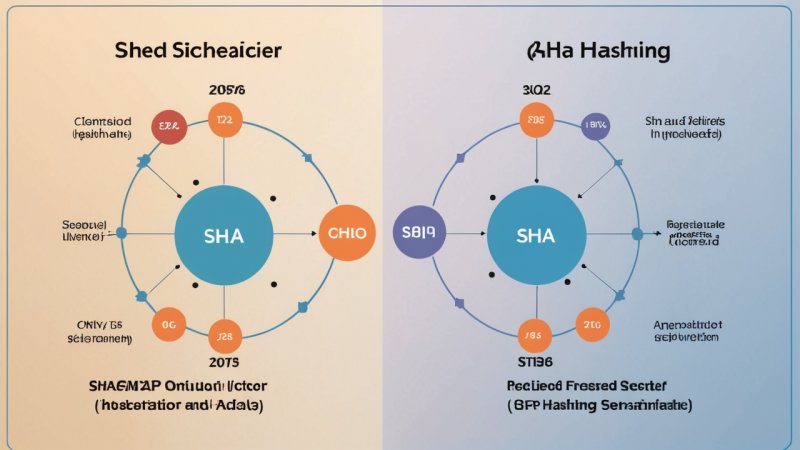Cryptographic hashing algorithms are essential tools in the field of computer security and data integrity. They transform input data into a fixed-size string of characters, which is typically a hash value that uniquely represents the original data. Among the various hashing algorithms, SHA-256 and SHA-3 stand out for their applications in blockchain technology, data integrity, and password storage. This article will compare these two algorithms, highlighting their pros, cons, and differences to help you understand which might be more suitable for your use case.
Overview of SHA-256
SHA-256, part of the SHA-2 family, was designed by the National Security Agency (NSA) and published in 2001. It produces a 256-bit hash value and is widely used in various applications, including Bitcoin, SSL certificates, and digital signatures.
Pros of SHA-256
- Security: SHA-256 is considered secure against pre-image attacks and collision attacks, making it a robust choice for cryptographic applications.
- Performance: It offers relatively fast performance on modern hardware, especially for applications that require high transaction throughput.
- Widespread Adoption: Due to its use in Bitcoin and various other systems, SHA-256 has been extensively vetted and is trusted within the security community.
Cons of SHA-256
- Fixed Length: The fixed output length of 256 bits may not be suitable for all applications that require different hash lengths.
- Vulnerability to Quantum Attacks: While not immediately relevant, the advent of quantum computing poses potential future threats to SHA-256.
Overview of SHA-3
SHA-3, released in 2015, is the latest member of the Secure Hash Algorithm family and was developed by a competition organized by the National Institute of Standards and Technology (NIST). Unlike SHA-2, SHA-3 is based on a different cryptographic construction known as the Keccak sponge function.
Pros of SHA-3
- Flexibility: SHA-3 supports variable output lengths, allowing users to produce hashes of different sizes, which can be advantageous in certain applications.
- Resistance to Attacks: SHA-3 offers strong resistance to various types of attacks, including collision and pre-image attacks, making it a secure option for new applications.
- Performance on Hardware: SHA-3 can perform well on hardware implementations, making it suitable for resource-constrained environments.
Cons of SHA-3
- Adoption: As a newer standard, SHA-3 has not yet seen the same level of adoption as SHA-256, which may lead to uncertainty in its implementation.
- Performance on Legacy Systems: SHA-3 may not perform as well as SHA-256 on traditional CPU architectures, which could be a consideration for legacy applications.
Comparison of Security Features
When it comes to security, both SHA-256 and SHA-3 offer robust protection against known cryptographic attacks. However, SHA-3's unique design based on the Keccak sponge construction provides additional flexibility and adaptability in terms of output size and potential resistance to future attacks, especially in the context of quantum computing.
Performance and Efficiency
Performance can vary depending on the specific implementation and the environment in which the algorithms are deployed. SHA-256 generally performs well on traditional hardware, while SHA-3 shines in hardware implementations. For applications that require high throughput and efficiency, SHA-256 may be the better choice, but for flexible use cases, SHA-3 could provide significant advantages.
Real-World Applications
SHA-256 is widely used in cryptocurrency applications, particularly in Bitcoin, where its security and performance are paramount. It is also found in various security protocols such as TLS and SSL. On the other hand, SHA-3 is still emerging in the field, with applications in secure communications, digital signatures, and blockchain technology, where its flexible output size can be advantageous.
Conclusion
In summary, both SHA-256 and SHA-3 offer robust security features and have their own strengths and weaknesses. SHA-256 is a tried-and-true algorithm with widespread adoption and excellent performance on traditional systems, making it suitable for many applications, particularly in the cryptocurrency realm. SHA-3, while newer, brings flexibility and potential future-proofing against emerging threats, especially in the context of quantum computing. The choice between the two will ultimately depend on the specific requirements of your project, including the need for performance, security, and adaptability.






